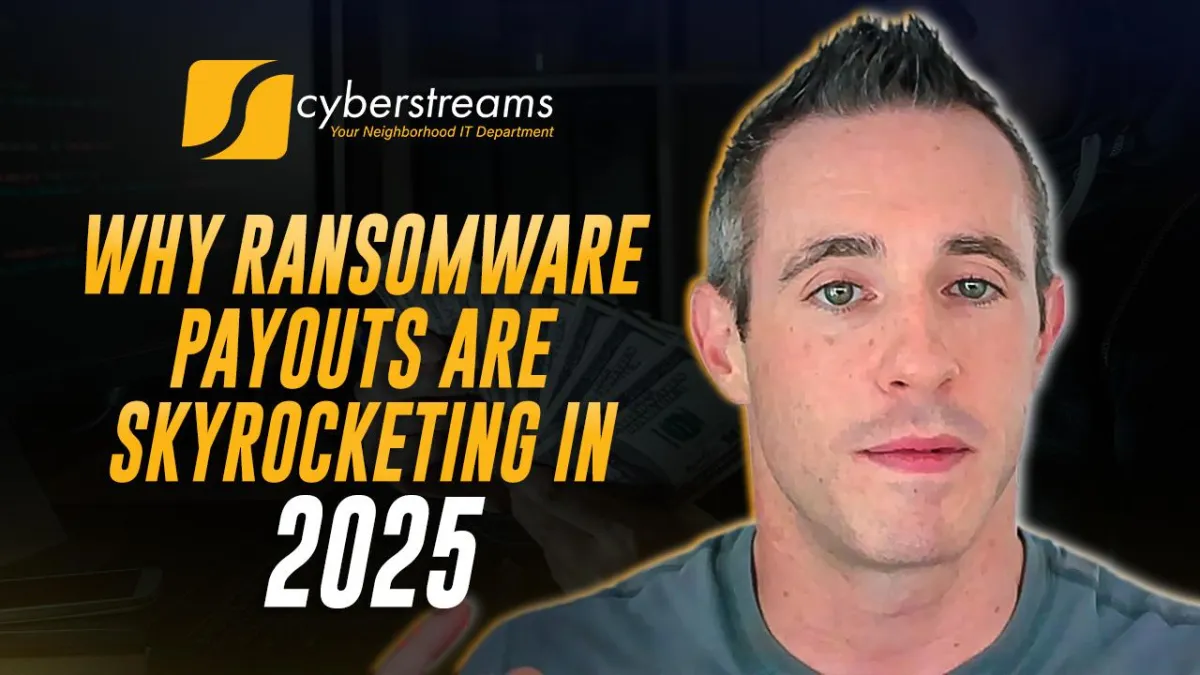
Why Ransomware Payouts Are Skyrocketing in 2025
At CyberStreams, we’ve seen the growing threat of ransomware turn into a full-blown crisis, especially for non-profits. Cybercriminals are no longer just after large corporations; they're increasingly targeting organizations that are rich in sensitive data but often under-resourced in cybersecurity.
In 2023 alone, ransomware payments surged to $1.1 billion, nearly doubling the $567 million paid in 2022 (Chainalysis, 2024). This explosion is largely due to “big-game hunting”, where hackers aim their crosshairs at high-value, often vulnerable victims.
Why Non-Profits Are at Risk
Non-profits have become a prime target. In 2024, a staggering 66% of these organizations reported ransomware attacks, and 59% had their data encrypted as a result (Cloudwards, 2025). Many hold confidential donor data, are subject to compliance regulations, and lack the budget for advanced cyber defenses, making them a perfect storm of vulnerability.
In one real-life case, a non-profit we support was hit by a phishing-based ransomware attack that locked them out of their donor database. With weak backup strategies and unpatched systems, they were left exposed. Thankfully, we were able to step in with a Cyber Fit Assessment, managed firewall, and Microsoft 365 Protection, restoring their systems without ever paying a ransom.
The Cost of Paying Up
Average ransom payouts have ballooned to $2 million in 2024, a five-fold increase from 2023’s average of $400,000 (Sophos, 2024). But paying doesn’t guarantee safety. In fact:
80% of those who paid faced another attack.
46% of them received corrupted data even after payment (Varonis, 2024).
Paying ransoms isn’t a solution, it’s an invitation for more attacks.
The Attack Vectors Are Evolving
Phishing remains the top vector, driving 41% of ransomware infections (AAG, 2025). Attackers also exploit unpatched systems, outdated software, and misconfigured networks. Non-profits are particularly vulnerable to compliance penalties, with 43% of healthcare data breaches linked to ransomware (IBM X-Force, 2025).
While law enforcement made notable progress in dismantling groups like LockBit, 538 new ransomware variants still emerged in 2023 (Chainalysis, 2024). The criminal ecosystem is evolving, and so must your defenses.
Despite the rising threat, only 29% of ransomware victims paid the ransom in Q4 2023, a historic low (Coveware, 2024). That’s a promising trend, but only if organizations take proactive steps to harden their defenses.
How Non-Profits Can Stay Protected: 3 Essential Steps
At CyberStreams, we help organizations like yours secure mission-critical systems and maintain compliance. Here’s how you can get started:
1. Strengthen Backup Systems
Backups are your last line of defense. Use off-site, encrypted backups to prevent permanent data loss. Our Backup for Workstations, Servers, and Microsoft 365 offers resilient, automated recovery options.
2. Block Phishing Attacks
Deploy advanced email filters and configure them beyond the default settings. Phishing is relentless, and misconfigurations leave you wide open. Our Microsoft 365 Protection stops threats even when filters fail.
3. Deploy Endpoint Protection
Modern ransomware often avoids detection by using legitimate tools maliciously. Our Managed Detection & Response (MDR) service keeps watch 24/7 and alerts your team when something unusual starts happening on your devices.
Conclusion
Ransomware attacks are not just rising, they’re evolving in sophistication and financial impact. For non-profits entrusted with sensitive data and critical missions, the cost of inaction can be devastating.
At CyberStreams, we believe in empowering organizations with preventive tools, proactive monitoring, and expert guidance. Whether it’s through secure backups, phishing prevention, or endpoint protection, our goal is to ensure you never have to choose between your mission and a ransom.
Don’t wait until it’s too late. Send a message to [email protected] and safeguard your organization today.
